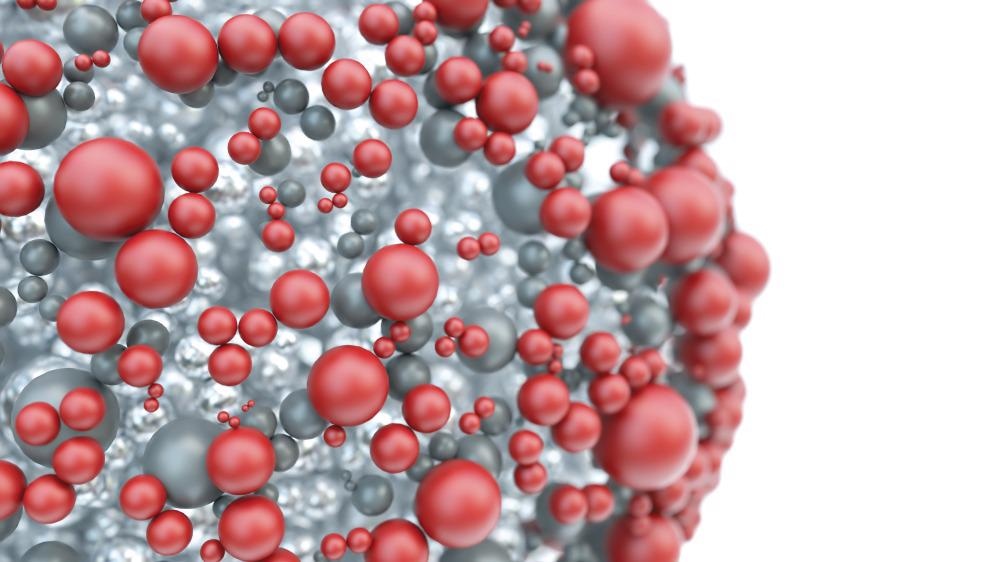In an article submitted to the preprint server Research Square* and under consideration to be published in the journal In Review Environmental Science and Pollution Research, researchers demonstrated the feasibility of using a titanium dioxide (TiO2) nanosheet supported MnCeOx as a catalyst for oxidation of 1,2-dichlorobenzene (o-DCB) at low temperatures.

Study: TiO2 Nanosheet Supported MnCeOx: A Remarkable Catalyst with Enhanced Low-Temperature Catalytic Activity in o-DCB Oxidation. Image Credit: Crevis/Shutterstock.com
Background
Polychlorinated aromatic hydrocarbons (PCAHs) generated from the waste incineration process can severely impact human health and the environment. Thus, the mechanisms that can effectively remove these pollutants have gained wide attention in recent years.
Catalytic oxidation is considered the most effective approach for PCAH reduction owing to its standard degradation performance, harmless products, and low reaction temperature compared to traditional methods such as physical absorption and heat treatment. Thus, developing highly efficient catalysts is crucial for effectively decomposing PCAHs through catalytic oxidation.
Transition metal oxides such as manganese oxides (MnOx) and ceric oxides (CeOx) have gained prominence owing to their robust resistance to chlorine poisoning, and cost advantage. Specifically, manganese dioxide (MnO2) displayed good catalytic activity and reducibility in the oxidation of PCAHs compared to other transition metal oxides.
The catalytic activity of MnO2 can be improved further by doping with cerium dioxide (CeO2) with high oxygen storage capacity. However, MnCeOx-based catalysts have certain drawbacks that include poor water resistance and high oxidation temperature, which necessitated further modification of MnCeOx-based catalysts.
Although TiO2 was previously used as support during catalytic oxidation, the catalytic performance of TiO2 can be improved further through morphology engineering that affects its interface reaction and absorption centers.
In previous studies, TiO2-supported catalysts designed by morphology engineering demonstrated a better catalytic activity for the oxidation of o-DCB, a PCAHs model compound, with a 90% conversion rate at 322oC. However, the oxidation required a notably high temperature, which indicated the need for further improvement in the process to achieve the low-temperature catalytic activity.
In this study, researchers proposed to synthesize TiO2 supported catalysts with strong resistance to water and better low-temperature catalytic activity and investigated their effectiveness in the catalytic oxidation of o-DCB. They also evaluated the relation between the morphology of TiMnCe and catalytic activity.
The Study
TiO2 nano truncated octahedron (TiO2-NTO) and TiO2 nanosheet (TiO2-NS) were synthesized through hydrothermal treatment. The hydrofluoric acid solution was added to the tetra n-butyl titanate (TBT) solution and agitated for 0.5 h, and the mixture was then transferred to a 50 mL Teflon reactor for hydrothermal treatment for 24 h at 200oC.
Subsequently, the suspension was subjected to centrifugation and then washed with anhydrous ethanol and deionized (DI) water. The collected precipitates were dried for 12 h at 80oC and then calcined for 2 h at 500oC to obtain TiO2-NS samples.
A similar method was followed for the preparation of TiO2-NTO, except the use of ammonium titanate nanowire as a titanium source in place of TBT. TiMnx catalysts were synthesized by an impregnation method.
100 mg of TiO2 samples and measured amounts of manganese nitrate (Mn (NO3)2) were mixed with 25 mL DI water and magnetically stirred for 0.5 h. Subsequently, the suspensions were kept at room temperature for 24 h and then dried for 5 h at 100oC.
The dried suspensions were eventually calcined in air for 2 h at 500oC, and the obtained samples were designated as TiMnx.
TiMn15Cey was also synthesized through the TiMn15-based impregnation method with the introduction of different Mn/(Mn+Ce) molar proportions.
Here x and y refer to the molar ratio of Mn/(Mn+Ti) and Mn/(Mn+Ce), respectively. The morphology of catalysts was evaluated using scanning electron microscopy (SEM), while transmission electronic microscopy (TEM) images were obtained using JEM-2100 F TEMs.
An advanced diffractometer was employed to evaluate the crystal phases of samples by performing X-ray diffraction (XRD) measurements, while reduction properties of samples were investigated on a dynamic adsorption reactor with 10 ℃/min of temperature rise rate, 50 mL/min gas flow, and 5% hydrogen/nitrogen (H2/N2) mixed gas.
Observations
Morphology engineered TiO2-NTO and TiO2-NS supported MnCeOx catalysts were successfully synthesized for catalytic oxidation o-DCB. TiO2 nanosheet supported MnCeOx (TiMn15Ce30-NS) demonstrated good stability, enhanced water resistance, and low-temperature catalytic activity for oxidation of o-DCB compared to the previously synthesized Mn-based catalysts.
TiMn15Ce30-NS displayed a better catalytic activity at low temperatures compared to TiO2-NTO supported MnCeOx (TiMn15Ce30-NTO).
The o-DCB conversion rate using TiMn15Ce30-NS as catalyst was 90% at 238oC and 50% at 156oC, while the conversion rate using TiMn15Ce30-NTO as catalyst was 50% at 213oC and 90% at 247oC.
TiMn15Ce30-NS also demonstrated superior resistance to water compared to TiMn15Ce30-NTO. TiMn15Ce30-NS achieved a o-DCB conversion rate of 50% at 179oC and 90% at 240oC in humid conditions.
Additionally, the TiMn15Ce30-NS displayed exceptional stability while retaining 98.9% conversion of o-DCB at 350oC for 12 h, indicating the critical influence of preferentially exposed {001} plane in TiMn15Ce30-NS on o-DCB oxidation.
The preferentially exposed plane favored robust interaction between CeOx and MnOx and higher concentration of surface-active oxygen and Mn4+.
Significance of the Study
Taken together, the findings of this study demonstrated that TiMn15Ce30-NS can be an effective catalyst for the oxidation of o-DCB at lower temperatures. The improved catalytic performance TiMn15Ce30-NS can be attributed to the morphology engineering that enhanced the reducibility of the catalyst. Thus, the study can act as a precursor for designing catalysts in the future through morphology engineering.
*Important Notice
Research Square publishes preliminary scientific reports that are not peer-reviewed and, therefore, should not be regarded as conclusive, guide clinical practice/health-related behavior, or treated as established information
Reference
He, X., Guo, H., Liu, X. et al. TiO2 Nanosheet Supported MnCeOx: A Remarkable Catalyst with Enhanced Low-Temperature Catalytic Activity in o-DCB Oxidation. 2022 PREPRINT https://www.researchsquare.com/article/rs-1210140/v1
Disclaimer: The views expressed here are those of the author expressed in their private capacity and do not necessarily represent the views of AZoM.com Limited T/A AZoNetwork the owner and operator of this website. This disclaimer forms part of the Terms and conditions of use of this website.